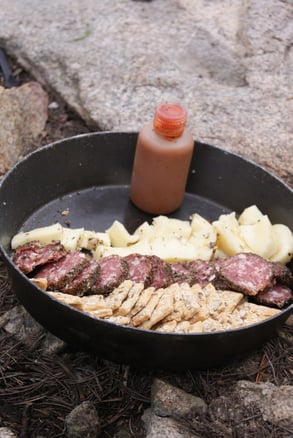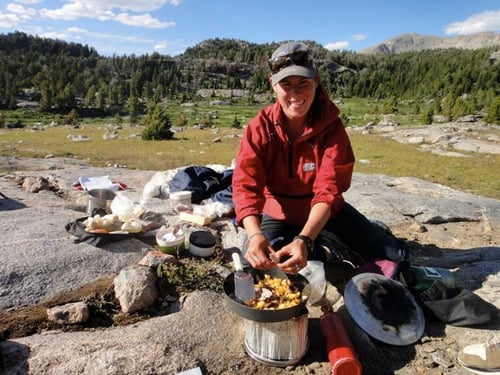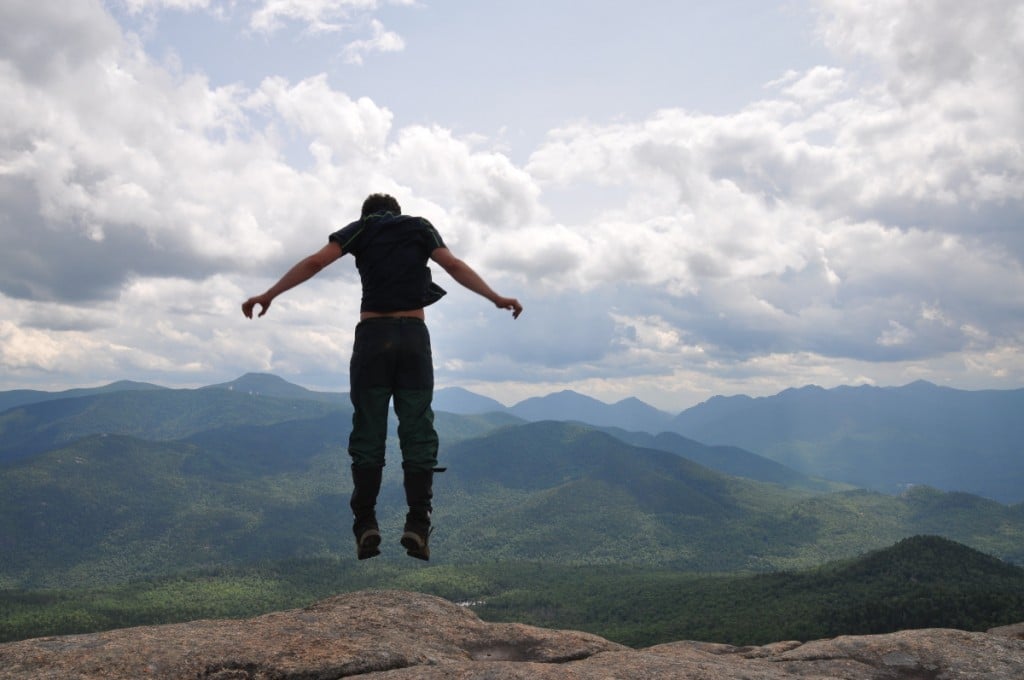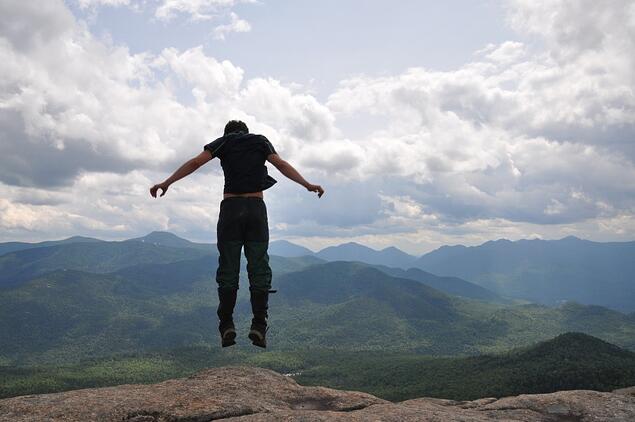 Some tasty pre-dinner appetizers and "cheesetizers" (with hot sauce, of course). Photo by Meriwether Hardie.
Some tasty pre-dinner appetizers and "cheesetizers" (with hot sauce, of course). Photo by Meriwether Hardie.
By: Meriwether Hardie, NOLS Instructor
In 1975 when my mom was 17, she took a NOLS course in the Wind River Range in Wyoming. Like many students, it was her first time making her own meals, and she quickly realized how much she loved cooking. She still tells stories about the first trout she caught, gutted and smoked over a fire, and about the yeast dough that she would make in the morning, keep in her backpack brain during the day (to rise with the heat of the sun), and then bake into bread with dinner. She also still remembers the names of all the wild berries and roots that she learned to forage during the course.
For my mom, NOLS was the start of a lifelong obsession with creating good, nourishing food.
This summer I sat down with her to talk about the unusual ingredients that she brings to enhance (both visually and nutritionally) backcountry meals. I smiled as she walked me through some of her favorite recipes, as her descriptions not only included flavors, but also colors, textures, and aromas. She is a true food artist!
1. Bag of Spices
This is your pouch of tricks, your tool box, and your magic spell kit. A well spiced meal leads to happy bellies and full hearts.
My mom’s backcountry spice kit includes: a generous amount of salt to bring out the flavor in any meal, pepper for spice and zip, red pepper flakes to make dull food more exciting, dried basil to include a taste of summer and color, dried thyme for its earthy flavor and to add depth to heavier dishes (potatoes, rice, etc.), a curry mix because it is different and exotic and provides variety even if the ingredients are simple (you can have rice with basil and thyme one night, and rice with curry the next—you have two very different flavors), and finally garlic (preferably fresh) because the smell of garlic frying in oil is simply one of the best aromas, and it will bring your camp mates running to your kitchen.
2. Stoneground Cornmeal
Cornmeal is gluten free, contains a lot of important nutrients for backcountry adventurers (including carbohydrates, iron, and phosphorus), and adds interesting texture, flavor, and color to many different meals. Cornmeal makes delicious sweet breakfasts or desserts such as cakes, breads, pancakes or cereal (cook the cornmeal in water or milk like oatmeal). Alternatively, you can make savory corn breads for dinner, or add cornmeal to soups (as a thickening agent).
3. Bulgur
Bulgur is a diverse and healthy grain with many uses. Bulgur has an interesting, chewy texture and a beautiful dark color. You can eat it as a hot or cold cereal (add cinnamon, sugar, and powdered milk) or as a savory dinner grain (with thyme, basil, salt, red pepper flakes). Bulgur is extremely easy to cook. Either pour the bulgur into a pot of boiling water and remove the pot from the burner, and the grain cooks in 15 minutes, or add cold water to a bag of bulgur and leave it to soak it throughout the night. In the morning, it will be ready to eat. For those with larger appetites, bulgur is a very satisfying and filling backcountry meal, and, most importantly, it helps facilitate healthy bowel movements!
4. Coconut Oil
Coconut oil has amazing nutritional properties and it doesn’t go rancid easily (great for warmer weather camping!). It can be a substitute for butter or olive oil, and is a tasty addition to stir fries, cooking grains, or baking breads. If you are camping in colder climates, add a spoonful of coconut oil to your nighttime hot drink and its healthy, high calorie fat will help keep you warm throughout the night. Also, If you forget lotion, use coconut oil on your skin (just don’t wear it into the tent at night in bear country!).

Hardie whipping up her own backcountry delights with the skills her mother taught her. Photo courtesy of Meriwether Hardie.
At the end of our conversation, my mom finished her thoughts with a simple statement about the importance of good food. “It takes a lot of planning to get yourself out into the wilderness,” she explained, “you should also put a lot of thought into what you eat. You don’t have to be an incredible cook to create good food. You just need the right ingredients and some directions. Good food is a way to bring people together and celebrate each day, while nurturing your body. Planning good food should be just as important as planning route and your gear.” Thanks to growing up in her household, I agree: good food is the essential fuel for a successful backcountry adventure.
Master your own backcountry cooking skills on a NOLS course.
Post cover photo from a NOLS course in Patagonia in Chile, courtesy of Alex Chang - Cornell Leadership Expedition.




 Feeling at home in the outdoors. Photo by Meriwether Hardie.
Feeling at home in the outdoors. Photo by Meriwether Hardie.